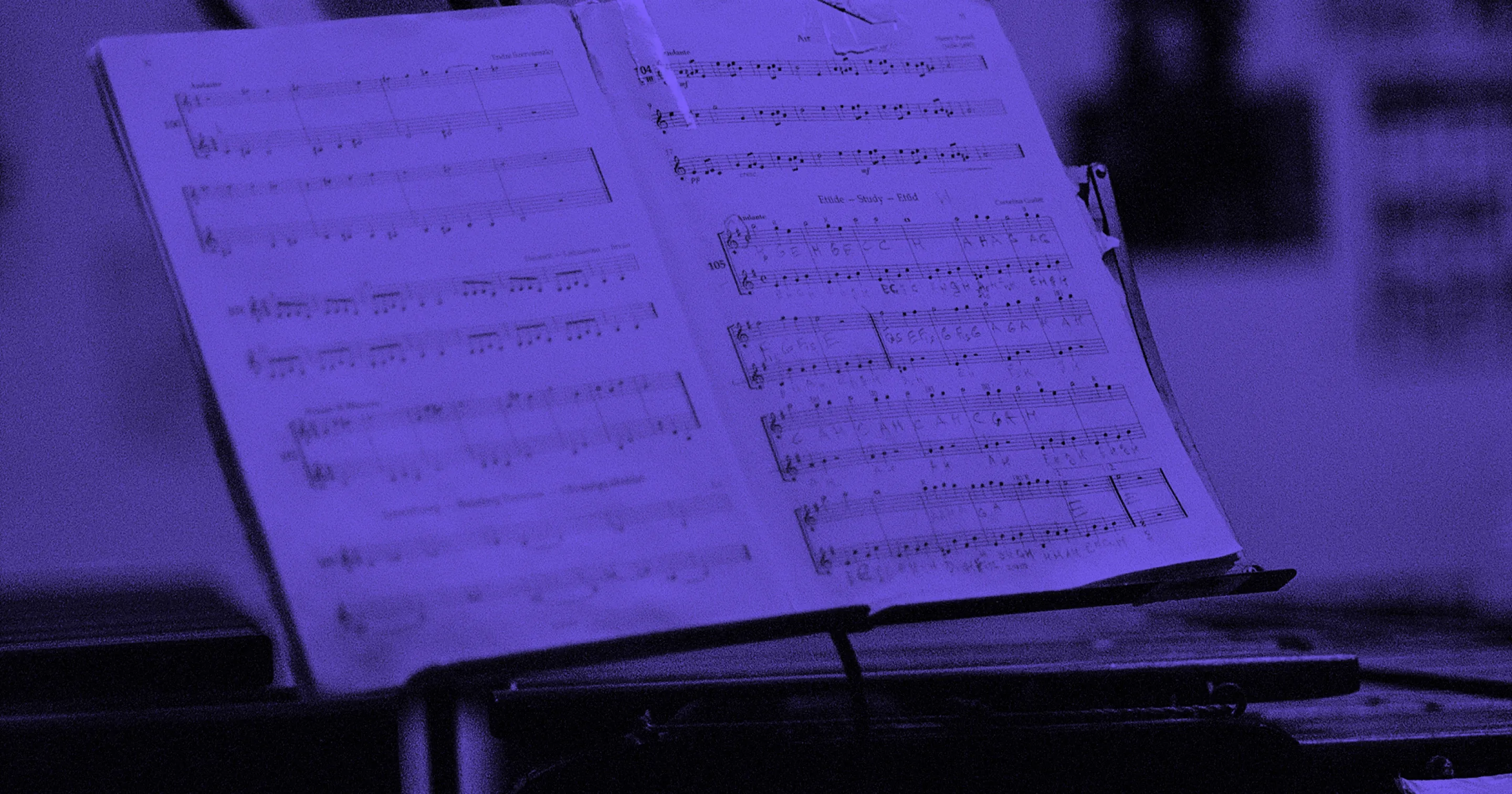
The Phrygian Mode: Unlocking Its Dark & Exotic Potential
Musiversal
Introduction
Many metal, flamenco, and film scores achieve their distinctively dark, exotic, or tense sound through the use of the Phrygian mode. It’s the go-to scale when you want to step away from the brightness of the standard major scale or the familiar melancholy of the natural minor, and inject a"Spanish","Middle Eastern","heavy", or even"ancient"character into your music.
What sets Phrygian apart is its signature lowered second degree (b2). This single alteration to the natural minor scale (or a more complex set of alterations from the major scale) is the primary source of its characteristic sound, creating a strong, often dissonant pull to the tonic and a unique tension that distinguishes it from all other modes.
This unique intervallic makeup gives Phrygian its dramatic and often intense energy. Whether you're aiming for a tension-filled melody, an exotic harmonic progression that demands attention, or the timeless feel of ancient chants or fiery flamenco, Phrygian is a powerful choice.
This guide will unpack the Phrygian mode, from its theoretical foundation to its practical, real-world applications. We'll explore how it's constructed and, more importantly, demonstrate how you can effectively use its unique voice to add depth and character to your own music.
If you’re new to modes as a concept, our article"Master Music Modes"provides a comprehensive overview of modes.
Deconstructing the Phrygian Scale: Theory & Construction
Understanding the Phrygian mode begins with grasping the foundation of music modes theory. Two primary ways to approach its construction are its relationship to a parent major scale or its unique interval pattern.
The Parent Major Scale Relationship (The Easiest Starting Point)
One way to conceptualize the Phrygian mode is by understanding its origin within the family of modes generated by any major scale. All modes born from a single major scale utilize the same collection of pitches. Phrygian holds the position of being the third mode in this family.
This means that if you identify the notes of any major scale, and then reframe that set of notes by treating its third degree as the new tonal center or root note, you are effectively playing in the Phrygian mode associated with that major scale.
For example, let's take the familiar C Major scale: C – D – E – F – G – A – B – C.
Its third note is E. When we use these same notes but anchor our playing from E (E – F – G – A – B – C – D – E), we've constructed the E Phrygian scale.
It's crucial to grasp that while E Phrygian is built from the same notes as C Major (its “parent scale”), the relocation of the tonal center to E radically transforms its melodic and harmonic landscape. The intervals, now measured from this new E root, create the distinctive and characteristic sound of the Phrygian mode.
The Interval Formula: Building from Scratch
While the parent major scale method is excellent for conceptualizing, understanding the interval pattern allows you to build a Phrygian scale from any starting note without first thinking about its parent major scale.
The Phrygian mode's formula, in terms of whole (W) and half (H) steps, is:
Half - Whole - Whole - Whole - Half - Whole - Whole (H - W - W - W - H - W - W)
Let's compare this to the natural minor scale (Aeolian mode) to hear the unique identity of the Phrygian mode. We’ll do this in an E key signature.
Natural Minor Scale (E Aeolian):
W - H - W - W - H - W - W (E – F# – G – A – B – C – D – E)
Phrygian Scale (E Phrygian):
H - W - W - W - H - W - W (E – F – G – A – B – C – D – E)
The most common application of a mode is in the harmonic context of its tonic. In other words, E Phrygian is generally used to create an"E minor with a b2"feeling, rather than consciously relating it to its parent C major scale in performance.
The Crucial Difference: The Lowered 2nd (b2)
Compare Phrygian to the natural minor scale. Both have a minor 3rd (m3), perfect 4th (P4), perfect 5th (P5), minor 6th (m6), and minor 7th (m7) relative to their tonic. However, the Phrygian mode features a minor 2nd (b2), whereas the natural minor scale contains a major 2nd (M2).
This lowered 2nd degree is what gives Phrygian its unique and distinctive character. It infuses the minor scale with a dark, exotic, or tense quality, often creating a strong pull towards the tonic, especially when the bII chord is used.
This lowered second degree, sitting just a half-step above the tonic, is the hallmark of Phrygian, introducing an inherent"clash"or"exotic flavor"that distinguishes it from more common minor scales. It is this b2 that is the primary source of its characteristic dark, Spanish, or heavy quality.
This unique Phrygian tension makes it a go-to choice for evoking specific moods and genres. It's frequently heard in the passionate expressions of Spanish flamenco, the aggressive drive of heavy metal, and the suspenseful atmosphere of film scores.
Depending on the musical context and instrumentation, Phrygian's compellingly dark character can manifest as fiery melodies, powerful riffs, ominous soundscapes, or the evocative feel of ancient folk traditions.
Constructing Phrygian Mode in Various Keys
Let's use the Phrygian interval pattern. We’re already familiar with the Phrygian mode, with E as its tonic. But let’s apply this mode using a different root note.
E Phrygian: E (H) F (W) G (W) A (W) B (H) C (W) D (W) E
Notes: E, F, G, A, B, C, D
A Phrygian: A (H) Bb (W) C (W) D (W) E (H) F (W) G (W) A
Notes: A, Bb, C, D, E, F, G
D Phrygian: D (H) Eb (W) F (W) G (W) A (H) Bb (W) C (W) D
Notes: D, Eb, F, G, A, Bb, C
Try constructing the Phrygian scale variations for G, C, and F# using the whole and half steps formula.
The Importance of Identifying Intervals
Knowing the theory behind the Phrygian mode is a good starting point, but to really get a feel for its sound, training your ear is essential. The best way to do this is by listening carefully to how Phrygian is actually used in music. This will help its unique sound stick with you, making it easier to recognize in melodies and chord changes.
Listen to popular songs that make good use of the Phrygian mode. As you listen, focus particularly on the minor second (b2) interval. A good exercise is to try singing or playing this specific note over a simple Phrygian chord or bassline; it's a great way to get a feel for its effect and how it pulls towards the tonic.
The more you surround yourself with Phrygian's sound and practice picking out its defining intervals, especially that minor second, the more it will become a natural part of your musical toolkit when you write or improvise. You'll start to develop an intuition for when and how to use it.
With the help of our “Ear Training” article, you can practice your ability to recognize and identify intervals. We’ve linked each interval, ascending and descending, to famous songs and melodies to help you internalize them more effectively.
When to Reach for Phrygian (and When Another Mode Might Be Better)
Phrygian excels in:
When another mode might be preferable:
Phrygian Mode Chords: Harmony & Chord Progressions
The chords built within the Phrygian mode unlock its harmonic potential, providing unique progressions and voicings contributing to its distinct sound.
Understanding the Roman Numeral System
Before looking at the chords of the Phrygian mode, it's crucial to understand how the Roman numeral system works. This system for labeling chords uses the Ionian mode as its universal foundation or reference point. The quality of the chords built on each degree of the major scale (major, minor, or diminished) determines the standard notation.
When analyzing music in other modes, we label the chords based on their relationship to the Ionian foundation. For example, the Phrygian mode has a flattened 2nd degree. The 2nd note is D flat, creating a Db major chord. In the C Ionian scale, the 2nd note is D-natural, making a D minor chord.
Because the 2nd chord in Phrygian has a root that is lowered (or"flattened") relative to the Ionian scale, it is labeled as a bII. The flat symbol indicates the altered root, and the uppercase numeral shows its major quality.
This notation only makes sense because we are comparing it to the standard (unflattened) ii chord from the Ionian mode.
Chord Qualities within the Phrygian Mode
Like traditional scales, we can build triads and 7th chords on each degree of the Phrygian mode. Let's use E Phrygian as our example (E-F-G-A-B-C-D):
Crucial Points for Phrygian Chord Progression
Expand your music theory knowledge and discover techniques for building captivating chord progressions across all key signatures by visiting the Musiversal blog on music theory.
Phrygian Mode Chord Progressions
These progressions highlight the unique sound of Phrygian harmony:
I - bII - i (Em - F - Em): This is the quintessential Phrygian progression, immediately establishing the mode.
i - bVII - bVI - bII - i (Em - Dm - C - F - Em): The sequence of chords (all diatonic to Phrygian) emphasizes the mode's darker landscape, with the bII chord setting up a strong Phrygian resolution to the tonic.
bII – i – bVII – bVI (e. g., F – Em – Dm – C): This progression is great for looping as it highlights the bII-i relationship. It creates a strong sense of Phrygian flavor due to the prominent bII chord.
i - v° - bII - i (Em - B° - F - Em): This progression uses the unstable diminished v° chord (Bdim). While the v° doesn't provide a strong dominant function like in traditional major or minor keys, its dissonant quality enhances Phrygian's dark or tense feel, often leading to the bII as a stronger setup for the tonic.
bII - bIII - i (F - G - Em): Here’s a simple chord progression that offers a sense of the mystery of the Phrygian mode
Popular Songs & Pieces in Phrygian Mode
Theory truly comes alive when applied to real music. Many famous pieces feature the Phrygian mode, often for entire sections or throughout the whole song, due to its potent and evocative nature.
The Phrygian mode is a popular choice in heavy metal, and it's almost synonymous with traditional Spanish and flamenco music. Next time you’re writing a song and you want a dark, tense, exotic, or particularly heavy sound, try using the Phrygian mode.
Conclusion: Mastering the Phrygian Mode
Here are the key takeaways about the Phrygian mode:
To maximize a mode's impact, you can use it consistently within sections or entire pieces to establish its unique tonal color. Contrasting it with a standard major (Ionian) or natural minor (Aeolian) section can also highlight its distinctive flavor.
The more you immerse yourself, the more naturally the Phrygian mode will become a powerful and expressive tool in your musical arsenal. Embrace the freedom to experiment, and let the unique voice of Phrygian elevate your music.
Your Music, No Limits.
Join the Waitlist